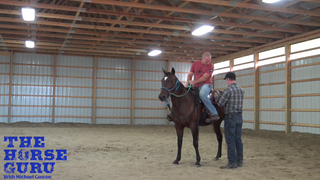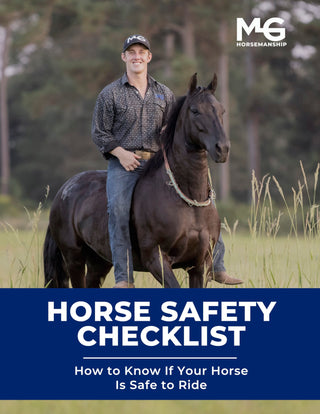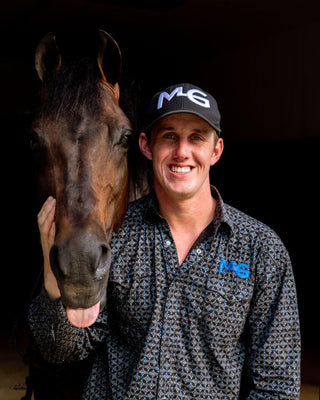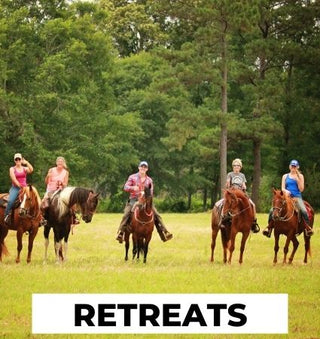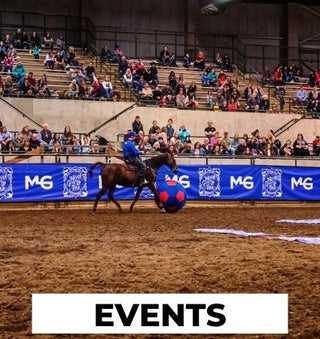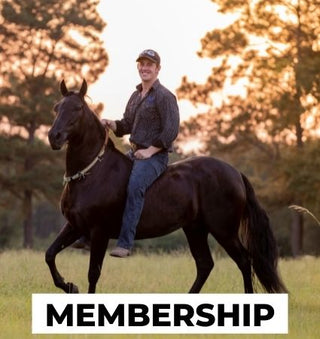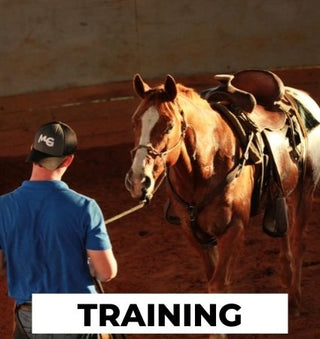Watch the Video Here or continue reading below!
Training a horse requires patience, consistency, and understanding of their natural instincts. In this blog post, we’ll walk through Day 2 of training with Belle, focusing on how to get your horse’s attention and enhance communication between you and your horse. Let’s break it down step by step!
1. Backing Up and Improving Softness
The Basics of Asking Your Horse to Back Up
To begin the session, the focus is on getting Belle to back up on command. On Day 2, we see significant improvement from Day 1. The key to success is maintaining a clear but gentle cue. By asking Belle to back up, you can observe her responsiveness and her ability to move with light pressure. The smoother and more relaxed her movement, the better she’s understanding your signals.
2. The Importance of Proper Handling: Lead Hand and Popper
Holding Your Cords Correctly
A critical part of training is how you hold your reins and lead hand. The popper (the end of the lead rope) should remain in your lead hand for maximum control. This setup allows you to give subtle warnings to your horse when needed. If your reins or lead hand are too far across your body, you lose leverage, making it harder to communicate effectively.
Guiding Belle in Circles
As part of the training, you guide Belle in a controlled circle. Use the popper to gently guide her in the right direction, and if she doesn’t respond, a quick, light pop helps her understand the importance of following your lead. The goal is to have Belle walking in a relaxed circle, softening her movements as she follows your commands.
3. Disengaging the Hindquarters: Managing Personal Space
Keeping Your Space Protected
A key moment in the session is when Belle gets too close to your personal space. You can control this by placing your hand near her face, signaling her to back off. Horses, like people, need to understand boundaries, and the most efficient way to teach them this is by gently but firmly using your hand to push them away.
The Power of the Disengage
Disengaging the hindquarters is crucial. If Belle gets too close or attempts to step into your space, a gentle disengage of her hindquarters moves her away from you, giving both of you more space. This method ensures you don’t have to struggle with the horse; instead, you gently redirect them without creating unnecessary tension.
4. Bending and Flexing: Building Responsiveness
Flexing and Asking for Submission
Flexing Belle’s head to one side is an important exercise in building her responsiveness and suppleness. The idea is to ask her to bend, using the reins to gently encourage her. You can tap lightly to signal when she needs to give more. Flexing builds trust, as it ensures Belle is listening to your body language and responding to your subtle cues.
Releasing at the Right Time
Timing the release is essential. When Belle gives you the correct response, you immediately release the pressure. This lets her know that she has done the right thing and strengthens the connection between you both. Quick releases teach Belle that good behavior leads to a relaxed state, fostering a smoother learning process.
5. Riding: Preparing for the Next Step
Transitioning to Riding
As Belle becomes more responsive to ground exercises, you can start working on riding. With the reins in hand, gently ask her to walk forward. Keep your heels down, sit back in the saddle, and maintain light pressure on the reins. The goal is to maintain relaxed control as Belle adjusts to the weight and motion of a rider.
Cantering and Maintaining Lightness
Once you begin to introduce cantering, remember the importance of maintaining softness. Don’t pull on the reins to force Belle into the canter. Instead, ask for a little more speed, keep your hands steady, and allow her to move fluidly. This helps Belle trust your guidance and prevents her from getting tense or resisting.
6. Using the Arena to Enhance Confidence
Utilizing the Arena Space
Training in a larger space allows Belle to stretch her strides and build confidence in her movement. By introducing changes in direction, like rollbacks, you help her understand how to maintain control even as the environment becomes more complex. This builds Belle's mental flexibility, preparing her for various situations while riding.
Creating Confidence with Obstacles
Obstacles, such as barriers or balls, are great tools for building confidence in your horse. When Belle is presented with an obstacle, she learns to face her fears and work through them. By guiding her around and through these obstacles, you teach her to remain calm and focused, which is vital for both her training and your safety as a rider.
7. Mental Pressure and Release: The Key to Success
Mental Pressure: Encouraging Your Horse to Face Their Fears
A big part of training is learning to apply mental pressure. This pressure encourages Belle to confront her fears and find the solution, whether it’s moving around an obstacle or listening to a new cue. Horses are sensitive to energy, so consistent pressure (without aggression) will guide them to make better decisions.
Rewarding Positive Behavior
As Belle starts to show understanding, it’s important to reward her promptly. Whether it’s a gentle pat, releasing the reins, or giving her space, rewards are key to reinforcing her good behavior. When horses know what behavior is expected of them, and that they’ll be rewarded for it, their willingness to learn increases.
Conclusion: Building a Trusting Relationship with Your Horse
Training a horse like Belle involves much more than teaching commands. It’s about building a relationship based on trust, clear communication, and understanding each other's language. Day 2 training is a pivotal moment in her development, where we see her starting to respond more fluidly to cues, whether it’s backing up, turning, or cantering. The foundation built today will continue to strengthen in the coming days as you both grow together.
By following these steps, you’ll improve your horse’s attention, responsiveness, and overall performance. Whether you’re working in the arena or on the trail, the skills developed during this phase of training are essential for a successful, safe partnership. Keep practicing, be patient, and enjoy the journey of developing a well-trained and confident horse!

